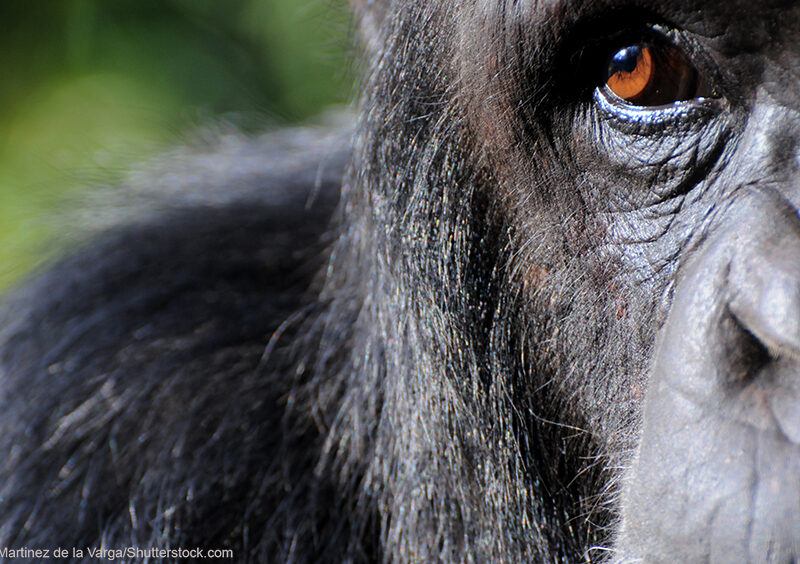Chimpanzee
Species Data
Class: Mammalia
Order: Primates
Family: Hominidae
Scientific Name: Pan troglodytes
IUCN Red List status: Endangered
Description
Along with the Bonobo, Chimpanzee are the great apes most closely related to humans, sharing 98.7% of our DNA. Individuals typically stand 1-1.7 metres tall and weigh anywhere from 32 to 60 kilograms, with males typically larger and sturdier than females. Their coats of black or brown hair tend to grey with age; skin colour ranges from black bare faces, hands and feet to the white found elsewhere.
Behaviour
Like Gorilla, Chimpanzee are social animals and spend their lives in groups of several dozen, with an alpha male and his retinue at the helm. These great apes can stand upright but tend to roam on all fours, using their hands and feet as they jump from branch to branch. Though vegetarian for most part, their diet spans berries, fruits and leaves but also bird eggs, insects and others. Highly intelligent, these apes are amongst the few species confirmed to use sticks and stones as tools for foraging and feeding. A female Chimpanzee called Washoe was the first non-human to learn to communicate using sign language.


Habitat
Chimpanzee have a discontinuous range through West and Central Africa. Their distribution is by far the greatest of all great apes, a 2.6-million-kilometre fragmented range from Senegal to the west to Tanzania to the east. The IUCN lists it as “possibly extinct” in Benin, Burkina Faso and Togo. In Cameroon, some 600 individuals are thought to live within the limits of Deng-Deng National Park.
Threats and Conservation
The Chimpanzee was classified as Endangered by the IUCN in 1996 and has remained in that category in the years since. The decision was prompted by the severe levels of poaching and habitat loss, which the IUCN believes have sparked a significant population decline that is set to continue in the following decades. Compounding these dangers is the Chimpanzee’s vulnerability to disease, with Ebola triggering mass mortality events since the 1990s. A slow life history amplifies the impacts of any deaths on a Chimpanzee community, hard hit by the loss of any individual.
